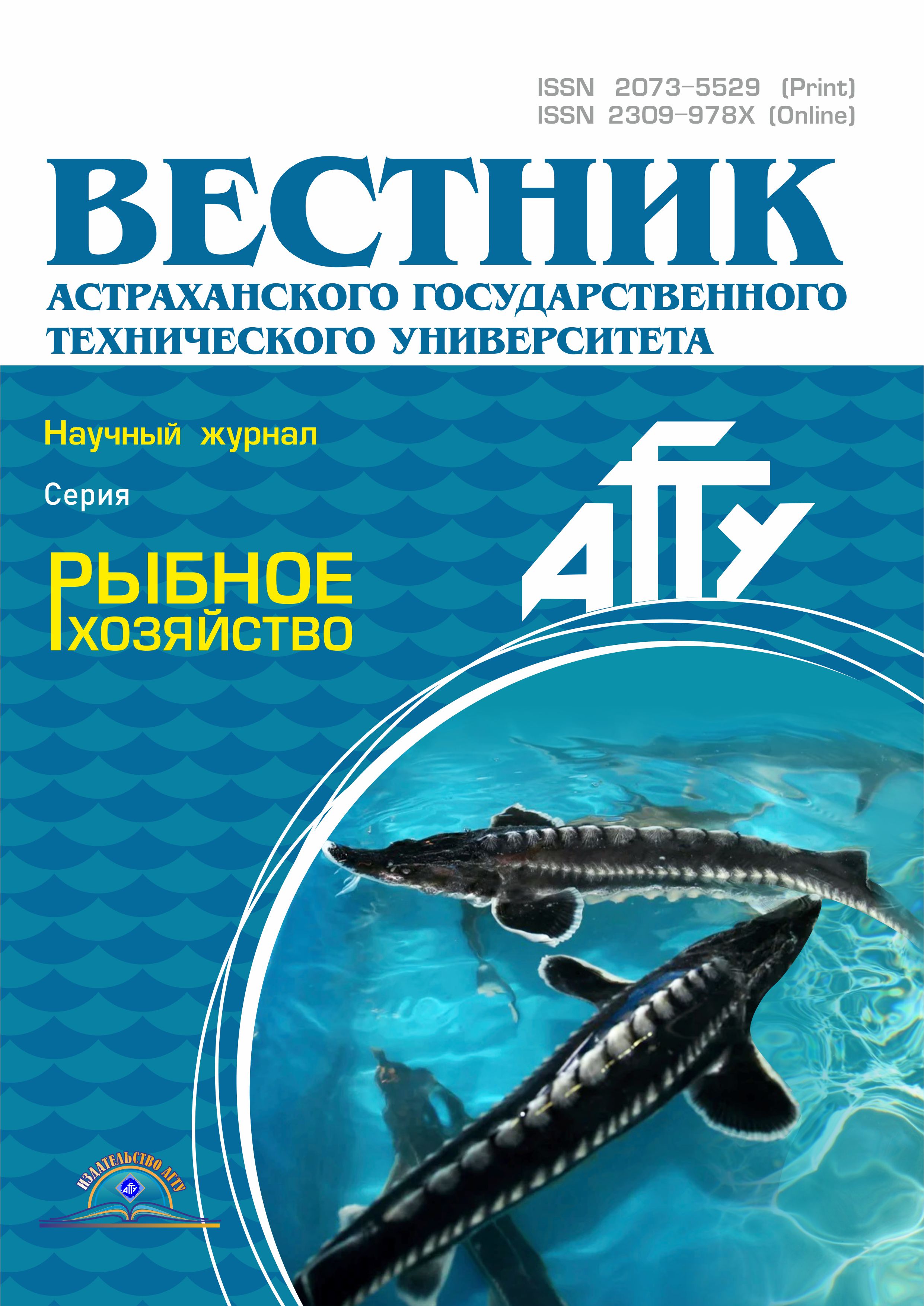ГРНТИ 34.39 Физиология человека и животных
ГРНТИ 62.13 Биотехнологические процессы и аппараты
ГРНТИ 69.01 Общие вопросы рыбного хозяйства
ГРНТИ 69.25 Аквакультура. Рыбоводство
ГРНТИ 69.31 Промышленное рыболовство
ГРНТИ 69.51 Технология переработки сырья водного происхождения
ГРНТИ 87.19 Загрязнение и охрана вод суши, морей и океанов
Проведены исследование процесса резания рыбы и моделирование сил вредных сопротивлений. Мышечная ткань рыбы описана реологической моделью Максвелла - Томсона. Приняты условия стесненного сжатия материала по ширине и отсутствия стесненного сжатия по направлению движения ножа. На основе энергетического подхода сила сопротивления формы ножа представлена как деформационная сила трения на макроскопическом масштабном уровне при условии гладкости поверхности граней. Разработаны математические модели для размерной и безразмерной сил сопротивления формы ножа без боковых граней. Установлена зависимость размерной силы от углов заточки, толщины ножа, реологических свойств материала и скорости резания. Прослежена зависимость безразмерной силы от безразмерной скорости резания и меры эластичности мышечной ткани. Выполнен сравнительный анализ сил сопротивления формы ножа с прямым обухом и двухкромочных ножей. При углах заточки задних наклонных граней 5; 10; 20; 50° максимумы силы составляют 0,317; 0,306; 0,288; 0,274 Н соответственно. При значениях мгновенного модуля упругости 1,5 · 105; 2 · 105; 2,5 · 105; 3 · 105 Н/м2 максимумы силы составляют 0,310; 0,411; 0,513; 0,614 Н соответственно. При значениях меры эластичности 4; 7; 11; 15 максимумы безразмерной силы сопротивления формы ножа с боковыми гранями составляют 1,959; 3,166; 4,774; 6,381; без боковых граней - 1,193; 1,864; 2,764; 3,663 соответственно.
рыба, резание, сила, сопротивление, форма, нож, грань, реология, вязкоупругость
1. 1. Dowgiallo A. Cutting force of fibrous materials. Journal of Food Engineering, 2005, no. 66, pp. 57-61.
2. 2. Boisly M., Schuldt S., Kaestner M. G., Schneider Y., Rohm H. Experimental characterisation and numerical modelling of cutting processes in viscoelastic solids. Journal of Food Engineering, 2016, no. 191, pp. 1-9.
3. 3. Schuldt S., Arnold G., Kowalewski J., Schneider Y., Rohm H. Analysis of the sharpness of blades for food cutting. Journal of Food Engineering, 2016, no. 188, pp. 13-20.
4. 4. Schuldt S., Schneider Y., Rohm H. High-speed cutting of foods: Cutting behavior and initial cutting forces. Journal of Food Engineering, 2018, no. 230, pp. 55-62.
5. 5. Pagani M., Perego U. Explicit dynamics simulation of blade cutting of thin elastoplastic shells using “directional” cohesive elements in solid-shell finite element models. Computer methods in applied Mechanics and Engineering, 2015, no. 285, pp. 515-541.
6. 6. Atkins T. Optimum blade configurations for the cutting of soft solids. Engineering Fracture Mechanics, 2006, no. 73, pp. 2523-2531.
7. 7. Atkins T. Prediction of sticking and sliding lengths on the rake faces of tools using cutting forces. International Journal of Mechanical Sciences, 2015, no. 91, pp. 33-45.
8. 8. Goryacheva I. G. Mekhanika frikcionnogo vzaimodejstviya [Mechanics of friction interaction]. Moscow, Nauka Publ., 2001. 478 p.
9. 9. Popov V. L. Contact Mechanics and Friction: Physical Principles and Applications. Berlin, Springer Verlag GmbH, 2017. 391 p.
10. 10. Soldatenkov I. A. K raschetu deformacionnoj sostavlyayushchej sily treniya dlya standartnogo vyazkouprugogo osnovaniya [On calculating deformation component of friction force for a standard viscoelastic base]. Trenie i iznos, 2008, no. 1, vol. 29, pp. 12-21.
11. 11. Soldatenkov I. A. Raschet treniya indentora s fraktal'noj sherohovatost'yu o vyazkouprugoe osnovanie [Calculation of friction indenter with fractal roughness on a viscoelastic base]. Trenie i iznos, 2015, no. 3, vol. 36, pp. 257-262.
12. 12. Ageev O. V., Fatyhov Yu. A., Samojlova N. V. Vybor i identifikaciya reologicheskoj modeli strukturno-mekhanicheskih svojstv myshechnoj tkani ryby [Selection and identification of rheological model of structural-mechanical properties of fish muscle tissue]. Izvestiya Kaliningradskogo gosudarstvennogo tekhnicheskogo universiteta, 2018, no. 49, pp. 75-91.
13. 13. Ageev O. V., Naumov V. A., Fatyhov Yu. A., Samojlov N. V. Analiz sootvetstviya reologicheskih modelej strukturno-mekhanicheskim svojstvam ryby [Analysis of rheological models compliance with structural and mechanical properties of fish]. Nauchnyj zhurnal Sankt-Peterburgskogo nacional'nogo issledovatel'skogo universiteta informacionnyh tekhnologij, mekhaniki i optiki. Seriya: Processy i apparaty pishchevyh proizvodstv, 2018, no. 2 (36), pp. 34-43. DOI:https://doi.org/10.17586/2310-1164-2018-11-2-34-43.
















